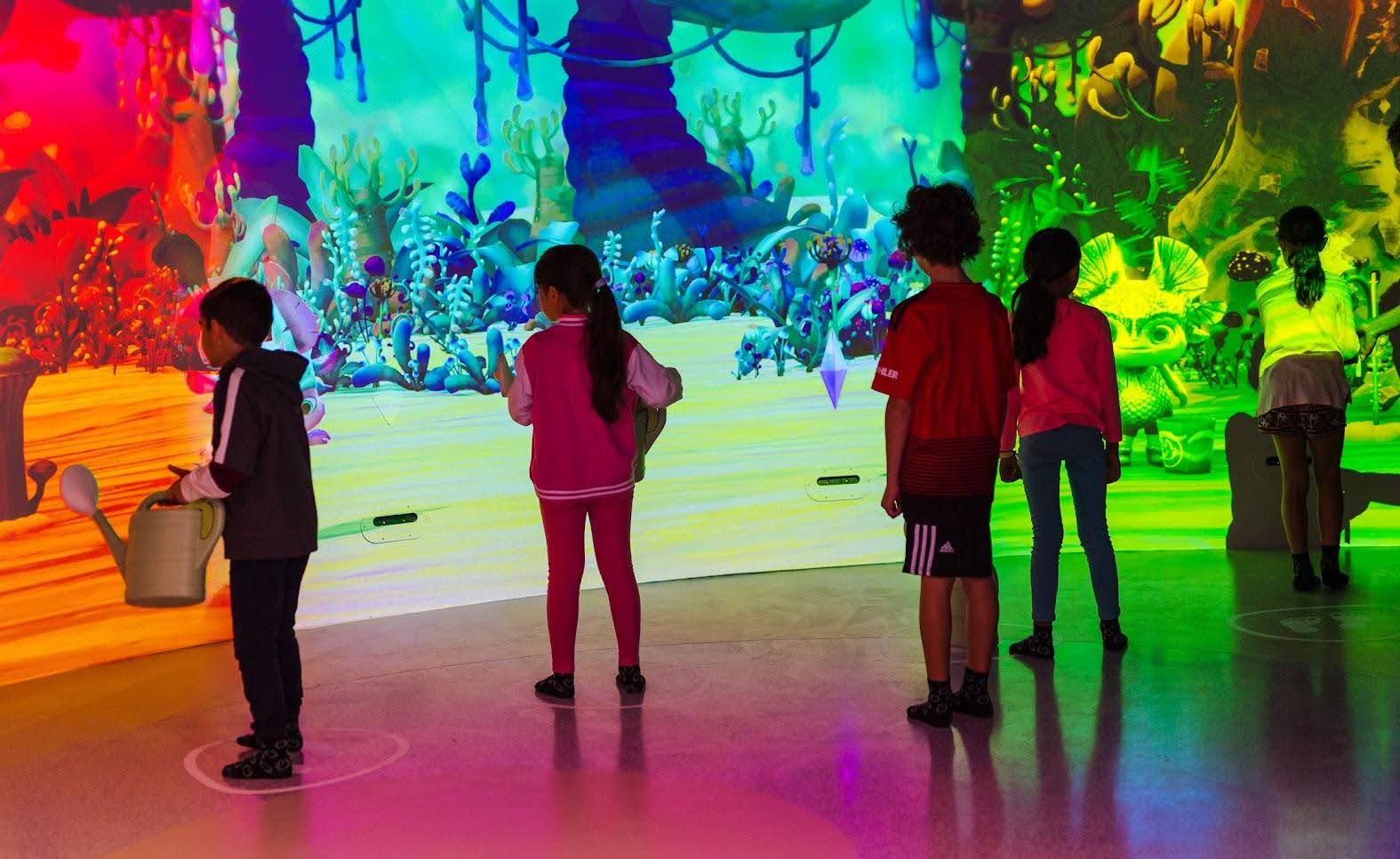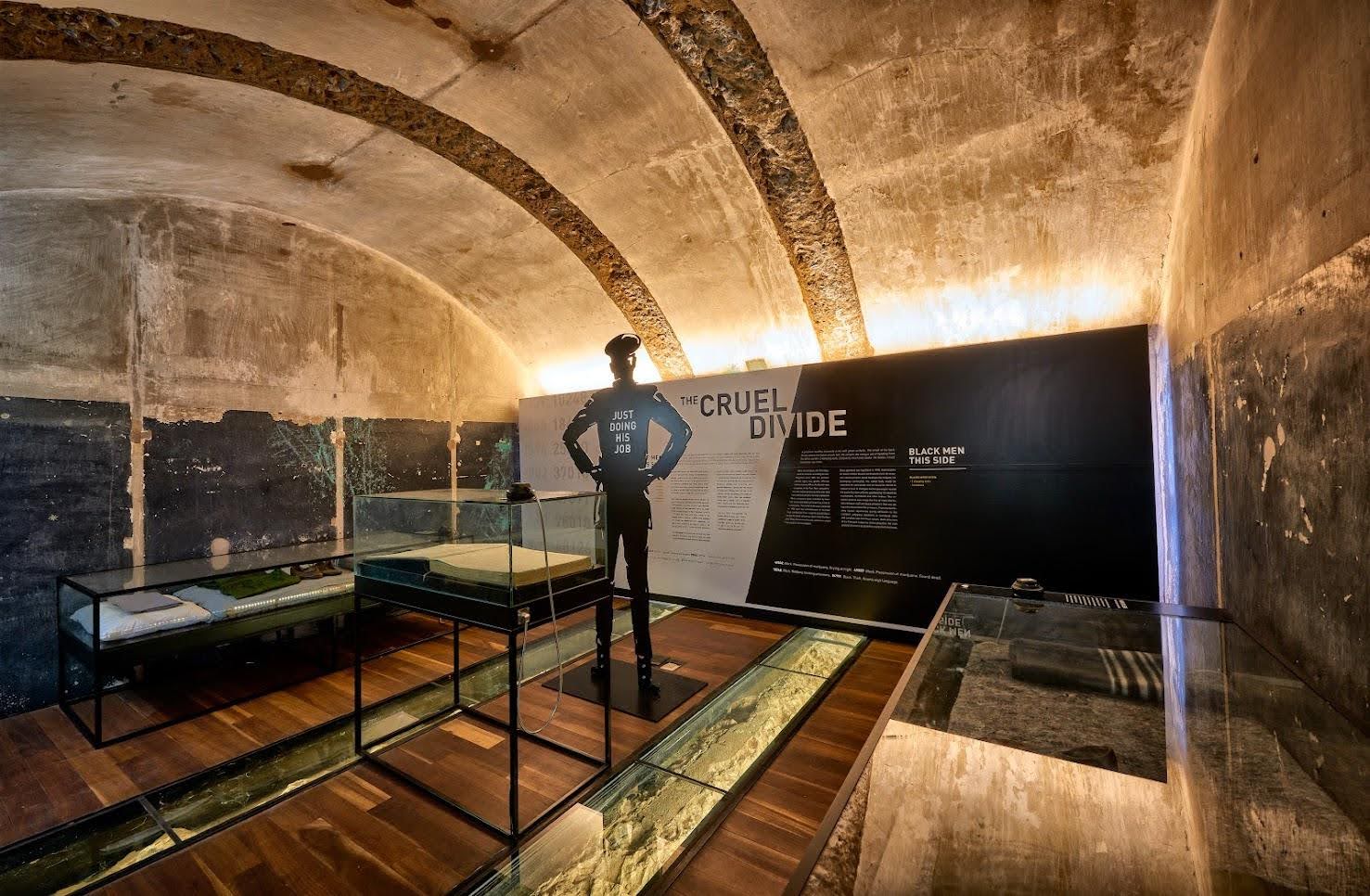Forget everything you think you know about museum or science centre learning. It’s not just about dusty artifacts anymore. If you want to leave visitors with a deeply enriching learning experience, it is important to navigate a fascinating crossroad: the digital vs physical. Both offer incredible power but knowing when to use which is the real game-changer.
So, when does digital shine, and when should you ditch the screens and motion VR headsets? Let’s dive in.
The unseen hand: Why digital dominates (sometimes)
You’d think every new science centre would be a digital wonderland. Screens everywhere, motion trackers, massive projections, VR headsets. But that’s not always the case with modern day exhibits. We start every project by asking: What’s the point? What do we want people to actually learn, or interpret?
Digital tools can be absolute superheroes. They pull back the curtain on the invisible, letting us explore concepts that are too big, too small, or too far away for a physical experience. Think about visualising climate change impacts over centuries, visiting Mars or shrinking down to see inside an atom. Digital makes the impossible tangible. It brings science to our doorstep.
Grounding truth: The enduring reality of physical space
While today’s digital toolbox gets our team excited and imagining all the possibilities for new exhibits, we must come back to an important truth. In almost all our projects, our team often finds itself blending digital experiences with analogue experiences and sometimes also with real objects. Why? Because people connect to physical spaces. They attach memories to them. When an experience is curated with precision, a physical space can feel safe, even when exploring edgy, uncomfortable ideas.
This is where the magic happens: blending digital and physical. Imagine immersive digital worlds that wrap around you, while physical elements keep you grounded in the immediate learning space. This is becoming so important as the advancement of digital technology is making it challenging for many people to distinguish between what is real and what is augmented. It’s about creating a flow, not a fight, between the two.
Wonderdal’s blueprint

Wonderdal: Integrating motion sensors and story-driven digital play
Too often, digital feels like an afterthought in an exhibition – a tablet slapped onto a wall. That’s a missed opportunity. At Wonderdal the children’s centre that formula D_ created, for instance, the digital layer isn’t just an add-on; it’s baked into the very foundation.
We designed Wonderdal knowing kids learn best by doing. So, the architecture, the interactive elements, and the learning goals all grew together. Technology like motion sensors, touchscreens, and wearable RFID tags are woven into the story. Digital fantasy characters, the Amuki, build empathy and guide the journey. It’s a structured but playful dance.
But here’s the crucial part: even with all that tech, Wonderdal doesn’t forget the power of physical play. Some stations demand kids jump, climb, and physically engage to absorb a lesson. It’s about balance, always.
The Old Fort’s approach

Old Fort: Interactive storytelling in a preserved heritage site
Now, let’s talk about our interactive multi-media exhibition at the Old Fort. You can’t just place screens and lighting anywhere in a heritage site. Here, a low-tech approach takes centre stage. Using light and shadow effects, the design creates an atmosphere that enhances the site’s history without disrupting its soul.
Creating this experience was about minimal interference, preserving the raw power of the artifacts.
Visitors still dive deep. Game-like interactive activities further engage visitors, allowing them to physically interact with exhibits, deepening their understanding of the historical events that shaped the nation. A highlight of the experience is a holographic projection of Joe Slovo, the renowned anti-apartheid leader, which places visitors face-to-face with his powerful story inside a recreated prison cell.
Making the Call.
So, what guides the choice? Digital formats are your go-to for interactivity, dynamic content, and personalisation. Need to show a complex process in motion? Digital.
Analogue formats often shine for ethical considerations, emotional connection, and powerful storytelling, especially when you want visitors to slow down and truly reflect. Many science centres and museums are now incorporating real objects, like bits of moon rock, or lava stone. These ‘real’ objects create their own sense of wonder and exclusivity.
Heritage sites? Analogue often respects the space best.
Ultimately, both demand meticulous design. What truly matters is how the medium serves the message, and how the experience sparks long-term learning, interpretation, or a deeper social awareness. It’s not about either/or; it’s about smart integration.



